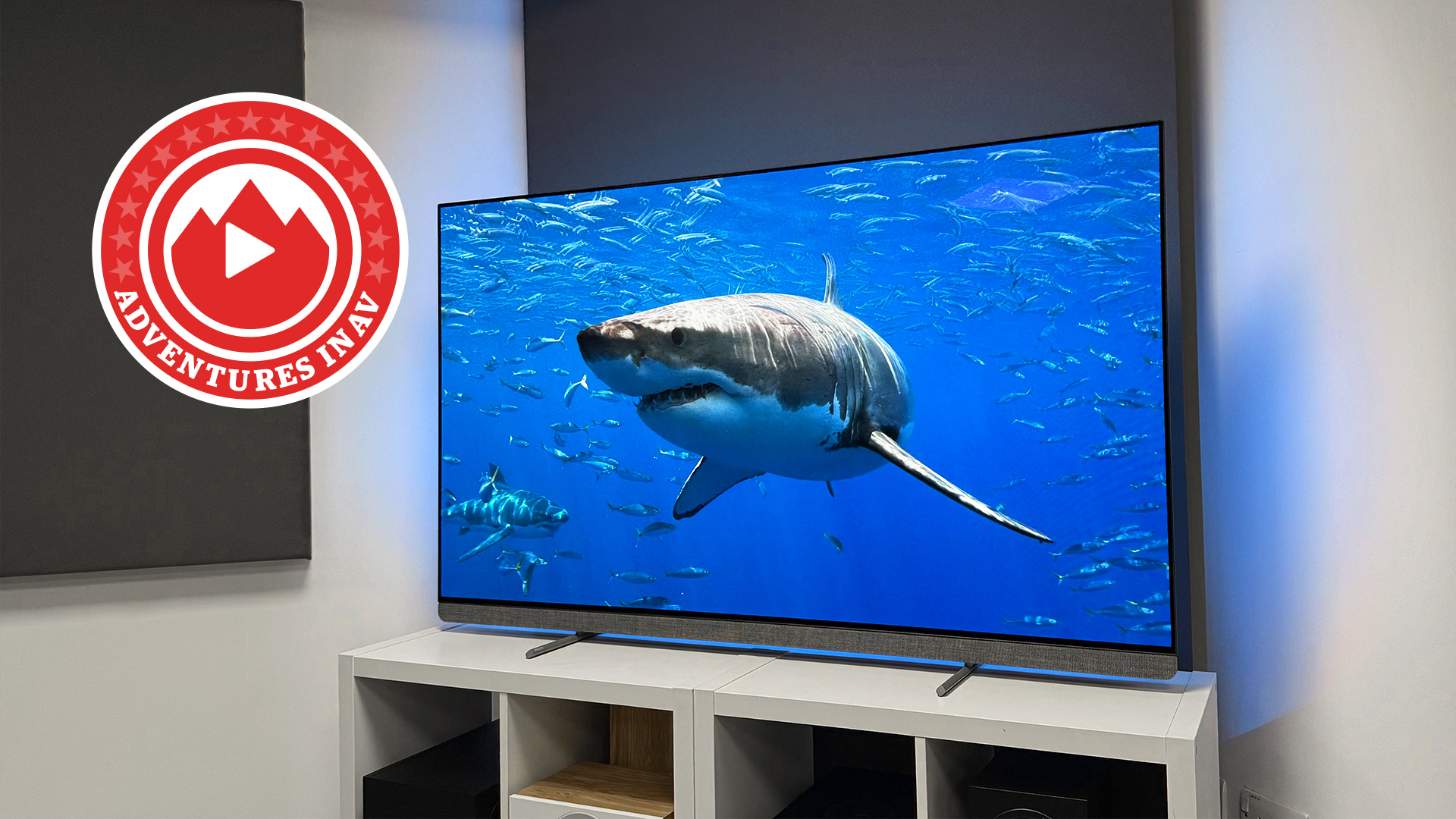I heard the 21-channel Nakamichi Dragon soundbar unleashed – and it really is quite something
Mark my words, this thing can roar
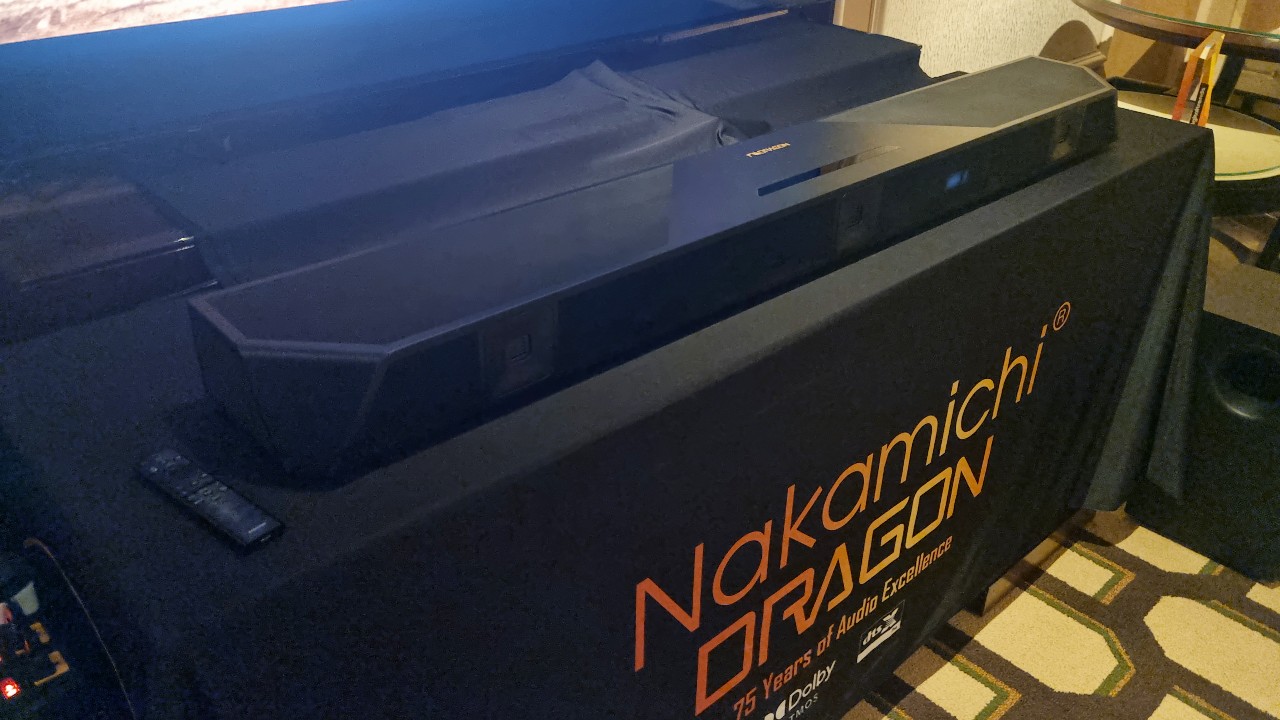
“Has any piece of hi-fi ever sounded as mythical or mystical as the Nakamichi Dragon?”, we penned some years ago as we mused the most legendary hi-fi products of all time. The Dragon cassette deck was indeed one of our chosen 14, owing to the lasting prestige surrounding the exquisite high-end deck, which was born in 1982 following a decade of innovative and premium cassette deck design by the company.
The Dragon naming carried through to a computing turntable in 1985 and a CD player in 1996, but for the past two and a half decades it has more or less laid dormant, a thing of pure legend. That is – and you know what is coming – until now. At CES 2023, Nakamichi declared the Dragon reborn. The company launched a… no, not a new Dragon cassette deck (though it did hand me press materials on a USB stick encased in a charming cassette in honour of the heritage), but a Dragon soundbar. Such a lifestyle and AV-orientated product type might not naturally sidle up to former Dragons, though the choice to revive the line with a soundbar isn’t wholly surprising considering the Japanese company has gone big in that market of late.
Indeed, Nakamichi has transformed into a rather different beast since those hi-fi heydays. It has changed hands more than a baton in a relay and since the early noughties shifted its focus to lifestyle wireless products rather than play to its hi-fi pedigree. With the exception of the AV1/AVP1 amplifier pairing in 2014, that is.
We imagine Nakamichi fans of old, not to mention today’s Nakamichi team itself, would probably be quite precious over the Dragon brand, so in a way it is nice to hear that the company spent five years developing the soundbar in order to get it right.
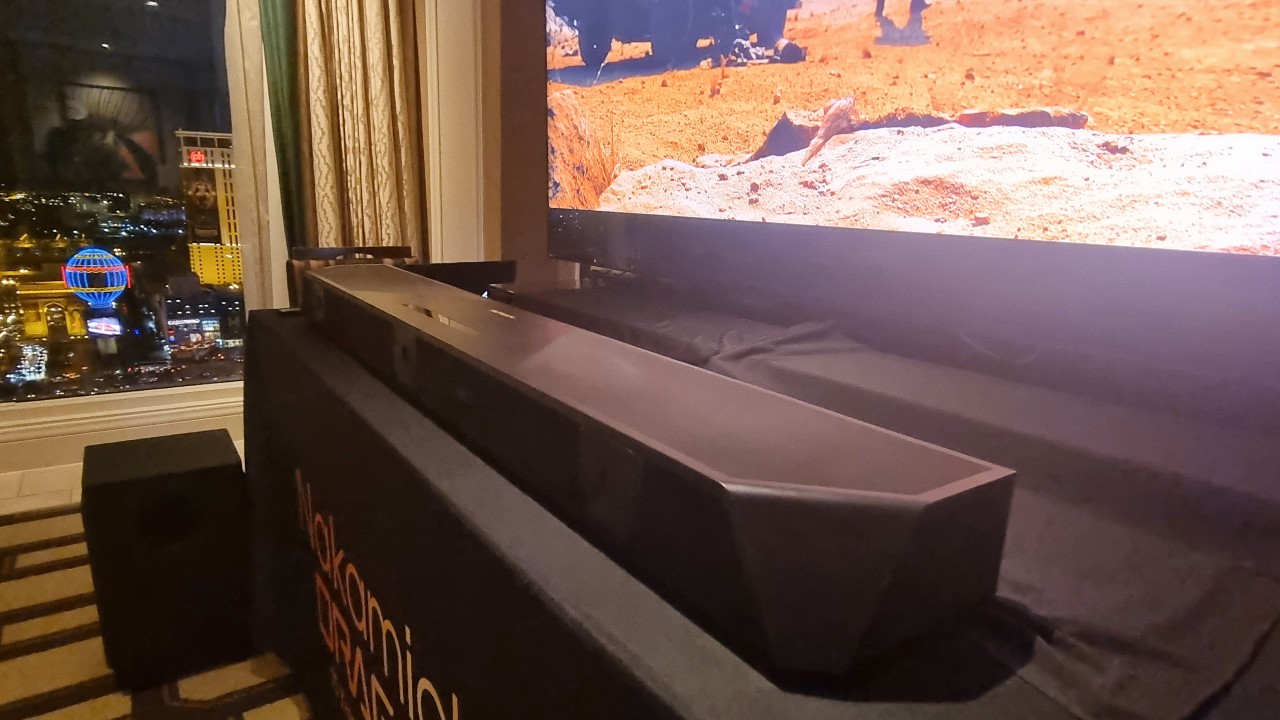
An AV system-soundbar hybrid
So, the Dragon soundbar. Or perhaps I should say the Dragon ‘system’. It’s easier to understand Nakamichi’s ambitions for the new Dragon when you learn that its goal was to create “something between an AV surround system and soundbar system”. After all, the Dragon isn’t just a soundbar, or even a soundbar and subwoofer; it’s a huge soundbar, a pair of significantly sized rear surround speakers and two subwoofers that try to behave like four. Suddenly, $3500 doesn’t seem so ‘out there’ – especially now that we are more ‘comfortable’ with the $2500 price tag of the single-bar Sennheiser Ambeo Max.
If you aren’t someone who is comfortable with the Sennheiser Ambeo’s size, however, you might well throw your arms up in disgust at the sight of the Dragon system's soundbar component, which is 58 inches (150cm) wide, 7.7 inches (19cm) deep and weighs 14kg. In fact, Nakamichi CEO Rayman Cheng says it had to approach an automotive company to manufacture such a large panel piece, and that if it wasn’t for shipping costs the Dragon bar might’ve ended up even bigger.
It might not be the most practical unit to house, but it doesn’t look overkill with a large TV such as the 75-inch model with which it was partnered for my demo.
The latest hi-fi, home cinema and tech news, reviews, buying advice and deals, direct to your inbox.
The huge size is made necessary by the incredible number of drivers that need to be housed. The whole system has 31 in all, covering 21 channels in an 11.4.6 configuration that supports both Dolby Atmos and DTS:X Pro decoding. Fun fact: this is supposedly the first plug-and-play soundbar set-up to use the Atmos code designed for AV receivers that support channels numbers greater than 7.1.4 – which may well explain why many other Dolby Atmos soundbars top out at 7.1.4.
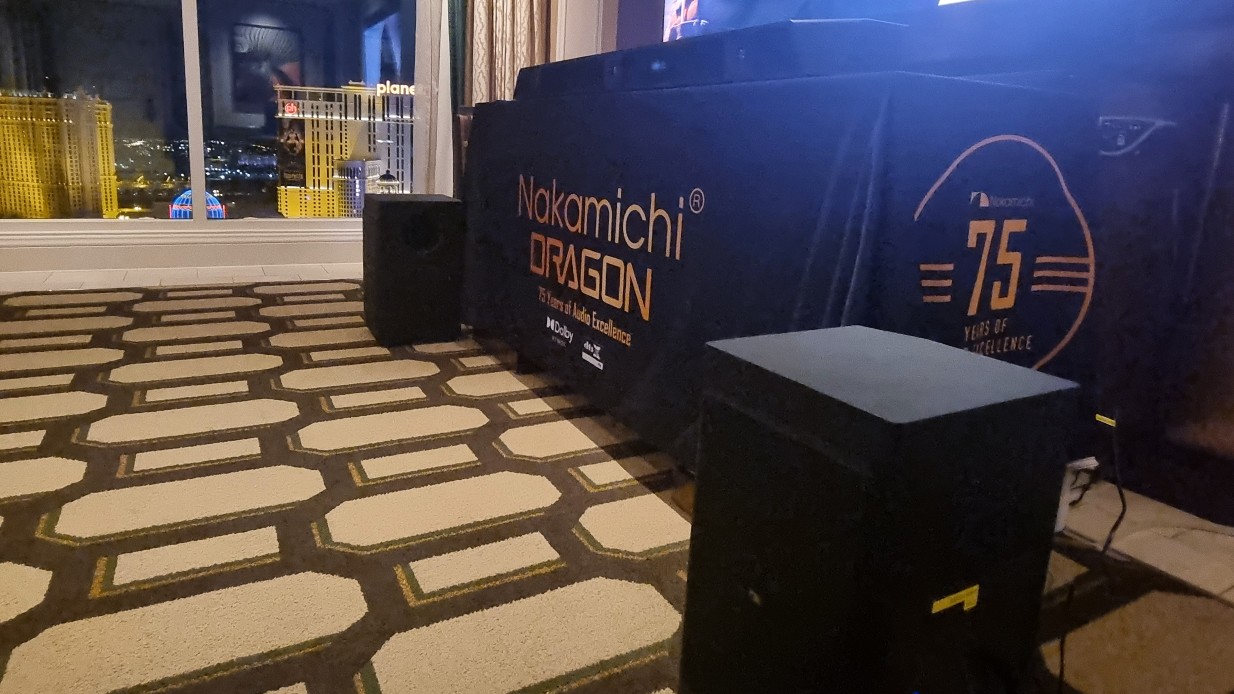
Six of those drivers are up-firing (four of these are in the main soundbar and two in the 3D Omni-Motion Reference Surround speakers) and four are in the two subwoofers in a dual isobaric (push-pull) configuration. Those soundbar-housed up-firing drivers are angled at both 10 and 20 degrees (one on each side) to render vertical and overhead sound objects at precise heights. Those at the top of the surround speakers can be rotated up to 180 degrees to accommodate different room layouts, too. And each surround speaker also features two three-inch drivers and an Air Motion Transfer tweeter.
These drivers are driven by 15 amplifiers, making for a claimed 3000-watt output. Suddenly, the Dragon looks worthy of its colossal name. It sounds worthy, too, thanks to some very impressive, er, scale…
Sonically ferocious
Perhaps unsurprising considering the numbers on its spec sheet, the Dragon can certainly unleash sound. This goes far beyond a typical soundbar set-up, which ordinarily fills the bubble of space around the TV and listener, and even the models we’ve heard that come with separate (albeit smaller) surround speakers. The Dragon easily filled the suite, almost right up to the rather high ceilings. As a room-filling alternative to a full-blown speaker system, this isn’t a bad compromise when it comes to scale. The soundfield wasn’t gappy either, despite there being a good few metres between the soundbar and surround speakers.
It can play loudly, too, with a claimed peak volume of 125 decibels (which is about as loud as a jet engine sounds when you're standing 100m from it). It isn’t a volume I was prepared to hit during my demo – my three-days-into-CES self was not ready for that – but even the comfortably loud half-volume had me sitting back in my seat. And for me, that is a first in the company of a soundbar set-up. I sat through testing classics Unbroken and Mad Max: Fury Road and the Dragon's renditions hit the spot when it came to atmosphere and cinematic excitement – jet engines and car revs had plenty of heft, with the subwoofers really able to dig their claws into explosions and the like, while gunfire was precise and plane rattles and wind noise filled the room.
Now, the Dragon essentially uses four subwoofers, and thankfully you can control how many you want in action at one time simply using the remote – because if you had all four going all the time, your sofa would likely inch out of position within weeks. Its peak bass level is, to put it mildly, intense.
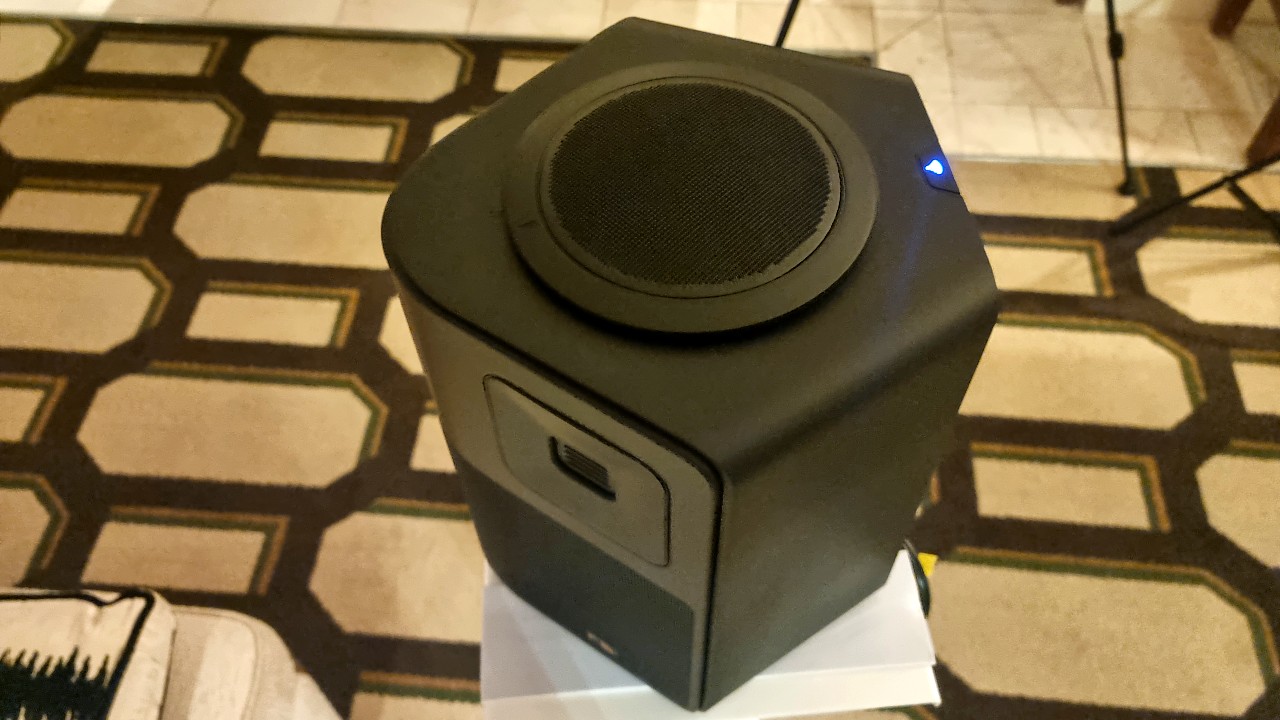
Despite all of the Dragon's volume, magnitude and weight, Nakamichi has resisted making a system that shouts at you. That said, the jury remains out on how subtle the system really is, as everything seemed very vivid and direct in our demo – sonic traits the hotel suite, with all its ceiling-to-floor window, would only have emphasised.
Team What Hi-Fi? will put the Dragon through its paces to properly scrutinise its dynamic dexterity and subtle detail soon enough, but already I can be sure of one thing: the Nakamichi Dragon soundbar is a plug-and-play beast that can make one heck of a roar.
MORE:
Stars of CES 2023: the 10 best TV and audio products we saw this week
Cassette Store Day: a look back to 1985 and the blank tape's heyday
Hands on: LG G3 OLED TV and C3 OLED TV review

Becky is a hi-fi, AV and technology journalist, formerly the Managing Editor at What Hi-Fi? and Editor of Australian Hi-Fi and Audio Esoterica magazines. With over twelve years of journalism experience in the hi-fi industry, she has reviewed all manner of audio gear, from budget amplifiers to high-end speakers, and particularly specialises in headphones and head-fi devices.
In her spare time, Becky can often be found running, watching Liverpool FC and horror movies, and hunting for gluten-free cake.
